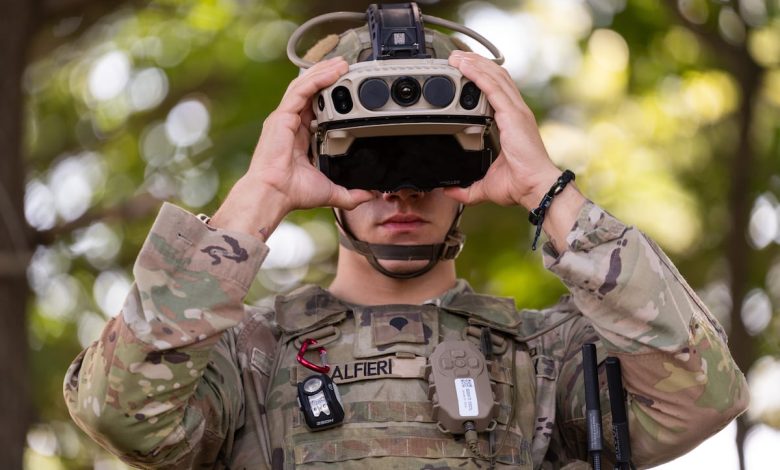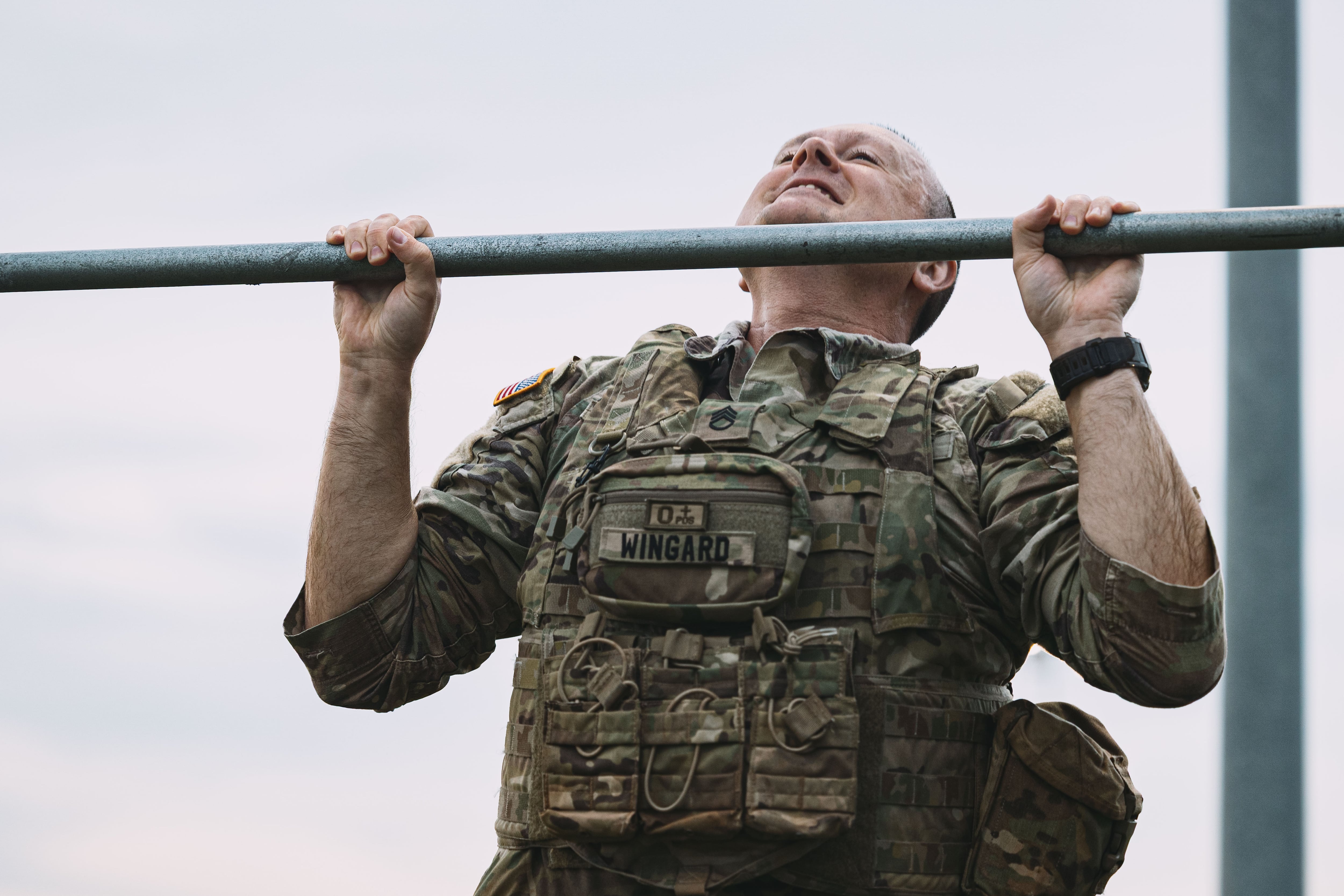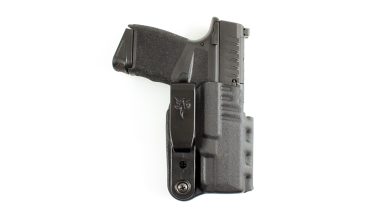Here’s what’s new in soldier gear in 2025 and beyond

From cold weather gear to loitering munitions, Program Executive Office-Soldier, the center for all things soldier gear, has been upgrading and fielding new equipment to troops, with more in store in the coming year.
This past year, the office has lightened body armor, added blood coolers for lifesaving measures and put together new cold weather gear for soldier testing, among other equipment. Program officers met with Army Times before the Association of the U.S. Army Annual Meeting & Exposition to showcase some of its equipment.
High-tech headsets
The Integrated Visual Augmentation System is now known as the Soldier Borne Mission Command. The heads-up display device is set to see a glasses version, much slimmed down from the former goggle configuration.
In September, Rivet announced it executed a $195 million agreement for the project, which the company describes as the Army’s “next-generation situational awareness and mission command platform for dismounted units, company-level and below.” That same month Anduril announced it had been awarded a $159 million contract by the service for “an initial prototyping period to develop a night vision and mixed reality system” as part of program.
Anduril and Rivet are set to deliver 70 systems each with the new configuration by March for further evaluation. The schedule calls for putting the new architecture and hardware together in one package by the fourth quarter of fiscal 2027, according to Lt. Col. Mark May.
Loitering munitions
PEO-Soldier is also pursuing Purpose Built Attritable Systems, a loitering munition system that includes four five-inch and two 10-inch quadcopters. The system, which comes in a kit, can be used as a one-way attack drone or it can be configured to drop munitions or other items.
“I wouldn’t say you fly this, you shoot it,” said Lt. Col. Will Taylor. “It’s not your typical drone. It’s a munition.”
On the larger side of munitions is the Switchblade 600, a loitering munition that carries a Javelin warhead capable of decapitating a tank turret. It weighs 75 pounds with a length of approximately five feet, according to an Army release.
After being fired, the tube-launched, unmanned aircraft system flies like a drone while an operator uses onboard cameras to identify and engage targets.
So far, the service has fielded 138 devices across 12 units, with 1,600 on order for future fielding, Taylor said.
Keeping soldiers safe
On the soldier protection side, Lt. Col. Ken Elgort said the new Lightweight Small Arms Protective Inserts, or LSAPI, offer the same protection against ballistics as the Enhanced Small Arms Protective Inserts, or ESAPI, but without the need for soft armor. The new body armor plate is also 1.5 pounds lighter.
The soft armor previously needed weighed about 2 pounds. Together that’s 3.5 pounds in weight savings for the same protection, Elgort noted.
In September, the Army awarded $65.5 million in delivery orders to Hardwire LLC and Leading Technology Composites, Inc., for 72,179 LSAPI plates, marking the official start of production for the new body armor plate, according to a service release.
Officials have also approved two new versions of helmet pads for a more customizable fit and improved comfort for soldiers. The rails on the helmet’s sides have been reconfigured for more length to attach tactical communications and hearing protection.

Conquering the cold
For soldiers fighting in the cold, tactical clothing, snowshoes, skis, cleats and other items are due for testing this winter, with the possibility of a unit being equipped with all new gear by fiscal 2028, said Lt. Col. Austin Banford.
Separately, soldiers in 3rd Brigade, 25th Infantry Division, and 3rd Brigade, 82nd Airborne Division, are evaluating a poncho that shields soldiers from electromagnetic detection.
Medical care in the field
Soldier medical devices, which represent the newest addition to PEO-Soldier, include the Sparrow ventilator, which automatically pumps respiration, saving a soldier or medic from the task. Officials have also delivered blood coolers and freezers to the tactical level, allowing medics to make ice packs for blood delivery in the field.
A blast overpressure system is in the works, too. The monitor will measure how much blast exposure a soldier has accumulated and record the data throughout their Army service. Lastly, a medical trauma sensor in development reads key data, such as a soldier’s blood oxygen saturation and pulse, to help medical personnel more quickly identify problems using objective data and algorithms.
Todd South has written about crime, courts, government and the military for multiple publications since 2004 and was named a 2014 Pulitzer finalist for a co-written project on witness intimidation. Todd is a Marine veteran of the Iraq War.
Beth Sullivan is an editor for Military Times. Previously, she worked as a staff reporter for The Daily Memphian and as an assistant editor at The Austin Chronicle.
J.D. Simkins is the executive editor of Military Times and Defense News, and a Marine Corps veteran of the Iraq War.
Read the full article here









